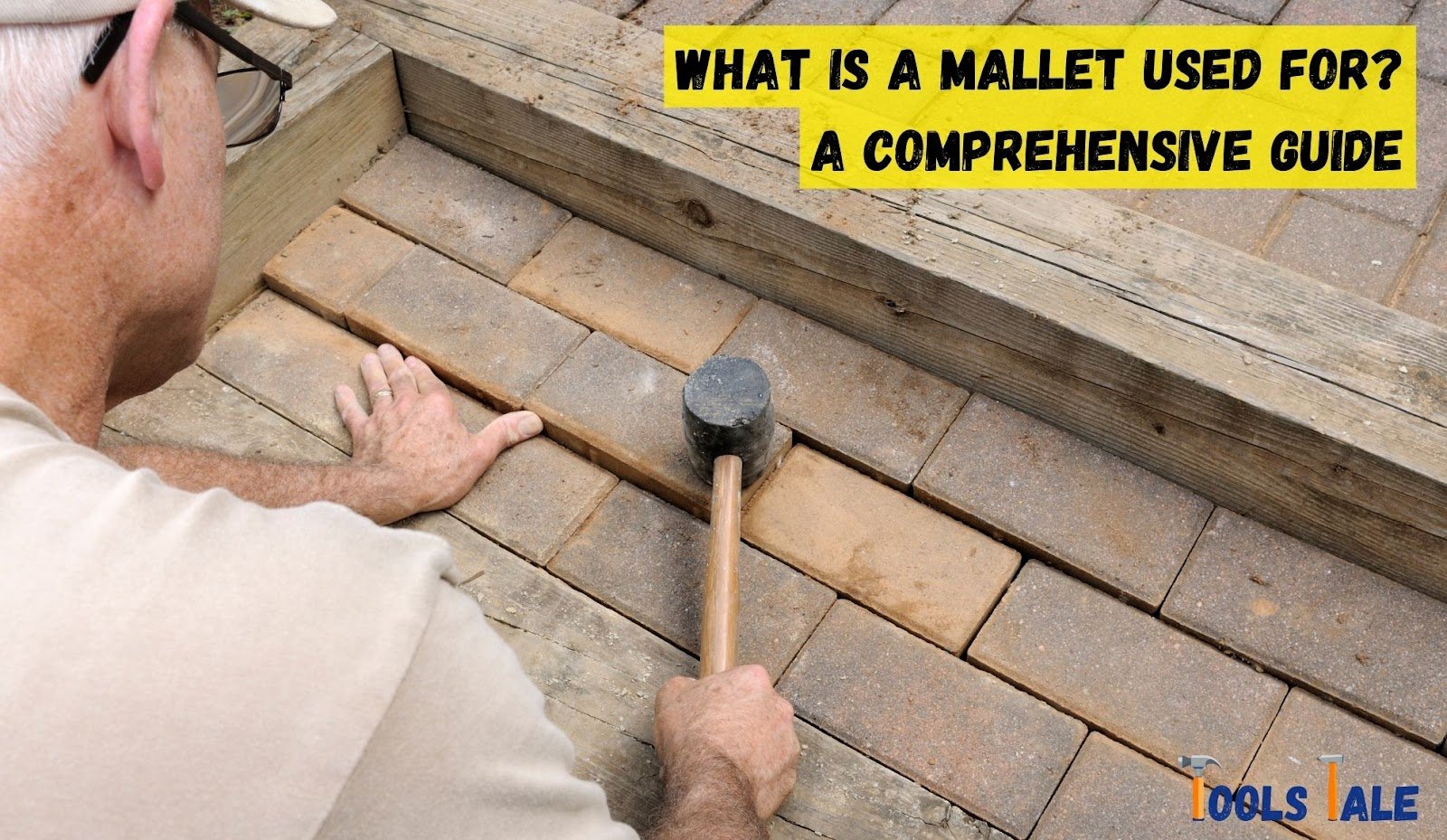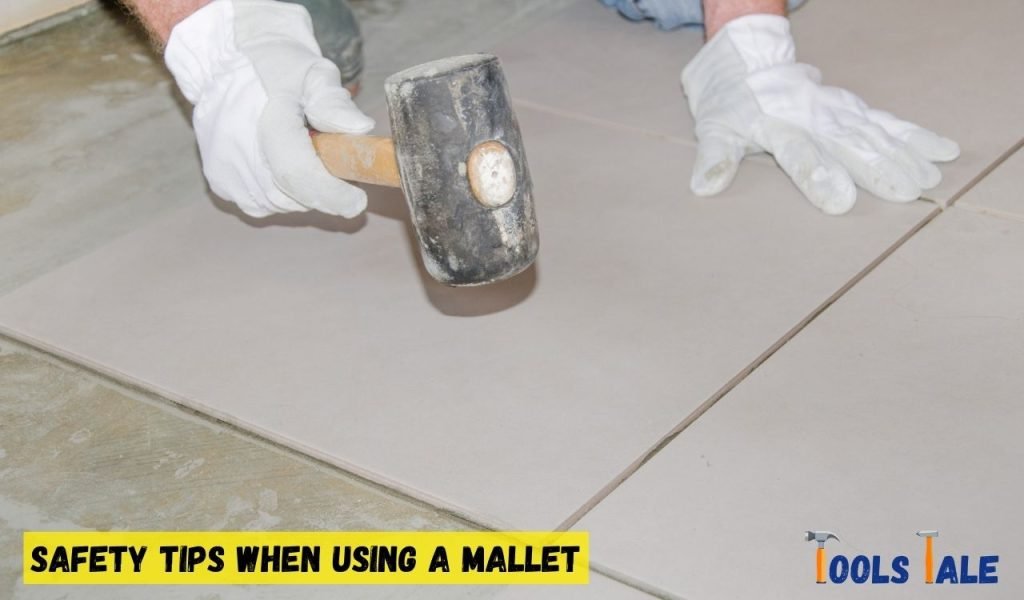Physical Address
304 North Cardinal St.
Dorchester Center, MA 02124
Physical Address
304 North Cardinal St.
Dorchester Center, MA 02124

Wondering about the secret life of mallets? “What is a mallet used for” is a question we’ve all asked at some point. Well, prepare to be pleasantly surprised. These unassuming tools have a remarkable range of applications that might just change your perspective. From woodworking wonders to everyday DIY convenience, mallets are more than meets the eye.
Whether you’re a seasoned craftsman or just curious, this guide will unveil the versatility and charm of mallets, showing you how they add precision and ease to your projects. Ready to tap into the world of mallets? Let’s dive in!
Key Summary: What Is a Mallet Used For?
A mallet, a tool featuring a head made of wood, rubber, or metal, serves a multitude of purposes. Its primary function is to deliver controlled force without damaging surfaces, making it indispensable in woodworking, metalworking, and musical instrument construction. Explore its diverse applications.
A mallet is a versatile hand tool characterized by its simple yet effective design. It typically consists of two main components: a head and a handle. The head is usually made of various materials, including wood, rubber, rawhide, or metal, and it can have different shapes and sizes depending on the intended use.
The distinguishing feature of a mallet is its soft striking surface, which sets it apart from hammers with hard, metal heads. This soft surface, often made of rubber or rawhide, allows mallets to deliver controlled and gentle blows without damaging delicate materials or surfaces. Mallets come in various types, each tailored to specific applications.
Wooden mallets are commonly used in woodworking and carpentry, where they provide the necessary force to join pieces of wood without leaving unsightly marks. Rubber mallets, on the other hand, are versatile tools suitable for a wide range of tasks, including furniture assembly and tile installation. In metalworking and jewelry making, rawhide mallets are preferred for shaping metal without causing dents or deformations.
Before we explore the practical applications of mallets, it’s essential to understand that not all mallets are created equal. There’s a wide range of mallet types and varieties, each tailored to specific tasks.
Rubber mallets are perhaps the most commonly recognized type. They feature a head made of soft rubber, which is perfect for tasks that require a gentle, non-marring touch. Carpenters and woodworkers often turn to rubber mallets when assembling furniture or working with delicate materials.
Wooden mallets, as the name suggests, have a head crafted from hardwood. Their sturdy construction makes them ideal for chiseling, carving, and other woodworking tasks. The weight and density of wooden mallets allow for precise control in shaping wood.
Rawhide mallets are favored in metalworking and jewelry making. Their head is typically made from rawhide leather, which provides a soft but substantial strike, preventing damage to delicate metal surfaces while still delivering adequate force.

Mallets are deceptively simple tools, yet their versatility spans across numerous industries and artisanal endeavors. Understanding the diverse uses of mallets sheds light on their significance and why they are indispensable in various domains. So, let’s delve into the intricate details of what a mallet is used for:
Primary Mallet Type: Wooden Mallet
Primary Mallet Type: Rawhide Mallet
Primary Mallet Type: Rubber Mallet
Primary Mallet Type: Rubber Mallet
Primary Mallet Type: Rubber Mallet
Primary Mallet Type: Rubber Mallet
Primary Mallet Type: Rubber Mallet
Primary Mallet Type: Rubber Mallet
Primary Mallet Type: Rubber Mallet
Primary Mallet Type: Rubber Mallet
Choosing the right mallet is essential to ensure that your specific task is completed efficiently and effectively. Mallets come in various types and materials, each suited to different applications. Here’s a comprehensive guide on how to select the perfect mallet for your needs:
For intricate and delicate tasks, such as jewelry making or piano tuning, choose a mallet with a lightweight head to provide precise control.
If you’re working on demanding tasks like metal shaping or masonry, opt for a mallet with a heavier head for more significant impact.
Consider mallets with ergonomic handles that provide a comfortable grip to reduce hand fatigue during prolonged use.
Depending on your task, choose a mallet with an appropriate handle length. Longer handles provide more leverage for heavy-duty tasks.
Some mallets have replaceable heads, which can extend the tool’s lifespan and save you money in the long run.
If you need to protect delicate surfaces, look for mallets with non-marring faces, which won’t leave marks.

When it comes to working with tools like mallets, safety should always be a top priority. While mallets are versatile and valuable tools, they can also pose risks if not used correctly. Here are some essential safety tips to keep in mind when using a mallet:
Before you start using a mallet, don’t forget to put on safety glasses or goggles. Even seemingly routine tasks can sometimes result in unexpected flying debris or particles. Protecting your eyes should be your first line of defense.
Wearing appropriate gloves can prevent blisters and provide a better grip on the mallet’s handle. Choose gloves that are comfortable and fit well to maintain control over the tool.
Selecting the correct mallet for your task is crucial for safety. Using a mallet that’s too heavy or too light can lead to accidents. Ensure that the mallet’s weight and material match the requirements of your project.
Maintain a stable and balanced stance while using a mallet. Position your feet shoulder-width apart, and keep your body weight evenly distributed. Hold the mallet with a firm but not overly tight grip to maintain control.
Practice controlled and accurate striking techniques. Avoid wild swings or erratic motions that can lead to accidents or injury. Focus on precision, not brute force.
Ensure that the workpiece you’re striking is securely clamped or held in place. This prevents unexpected movement or slipping, reducing the risk of injury.
Be aware of your work environment. Make sure there are no obstacles or tripping hazards in your workspace. Keep bystanders at a safe distance to avoid accidents.
Whenever possible, work on a stable surface like a workbench. This provides better control and reduces the likelihood of the mallet rebounding unexpectedly.
Under no circumstances should you use your hand or fingers as a striking surface. Always strike the workpiece with the appropriate end of the mallet.
Regularly inspect your mallet for signs of wear or damage. If you notice any cracks or issues with the head or handle, replace or repair the mallet promptly.
Proper maintenance and care of your mallets are essential for ensuring their longevity and performance. Whether you use mallets frequently or occasionally, here are some maintenance tips to keep them in top shape:
After each use, wipe down the mallet head to remove any debris or residue. For wooden or rawhide mallets, use a soft, damp cloth. For rubber mallets, a simple wipe with a damp cloth or sponge will do.
Regularly inspect your mallet for signs of wear and tear. Check for cracks, splinters, or any damage to the head or handle. If you find any issues, address them promptly to prevent further damage.
If your mallet has a wooden handle, consider applying a light coat of wood wax or oil to keep the handle from drying out and splintering. Sand down any rough spots or splinters.
Store your mallets in a dry, cool place away from direct sunlight or extreme temperatures. Hanging them on a pegboard or tool rack can help keep them organized and prevent damage.
If your mallet’s head becomes too worn or damaged, replace it. Many mallets allow for head replacement, which is a cost-effective way to extend the tool’s life.
Check the handle’s attachment periodically, especially if it’s a wooden mallet. Over time, handles can loosen. If you notice any wobbling or movement, secure it properly.
Avoid striking hard surfaces or materials that could cause excessive wear on the mallet head. Using a mallet for unintended purposes can lead to premature damage.
By taking the time to maintain and care for your mallets, you’ll not only prolong their lifespan but also ensure that they continue to perform reliably and safely.
What Is a Mallet Used For guides us through the diverse world of this unassuming yet invaluable tool. Its versatility spans woodworking, carpentry, and creative projects, offering precision and control in every strike. Whether you’re a seasoned craftsman or an aspiring DIY enthusiast, the mallet stands as a symbol of craftsmanship and a testament to the art of using the right tool for the job.
So, as you embark on your projects, remember the mallet’s silent but substantial contribution to making your work easier, more precise, and truly rewarding.
A mallet serves as a versatile hand tool designed for precise striking. Its primary purpose is to deliver controlled blows without causing damage, making it ideal for various tasks like woodworking and metal shaping.
A mallet is also commonly referred to as a “soft-faced hammer.” Unlike traditional hammers, mallets have softer heads made of materials like rubber, rawhide, or wood to prevent marring or denting surfaces.
Yes, mallets come in various types tailored to specific applications. Wooden mallets are used in woodworking, rubber mallets for assembly tasks, and rawhide mallets in metalworking. Each type suits particular needs.
To use a mallet safely, follow these guidelines: Wear eye protection, grip it firmly but not too tightly, select the right mallet for your task, and strike with controlled force to avoid accidents and injuries.
Safety is paramount when using a mallet. Wear safety goggles to protect your eyes, maintain a proper grip, choose the right mallet for the task, and ensure a stable work surface to prevent accidents.
Certainly! Wooden mallets are often used in woodworking. They provide the necessary force for tasks like chiseling, carving, and joining pieces of wood without causing damage.
Rubber mallets are versatile tools commonly used for assembling furniture, installing flooring, and gently tapping objects into place. They prevent surface damage while providing controlled force.
Yes, mallets can be useful in arts and crafts for tasks like leatherworking, jewelry making, and shaping various materials. They offer precision and control, making them valuable tools in creative projects.